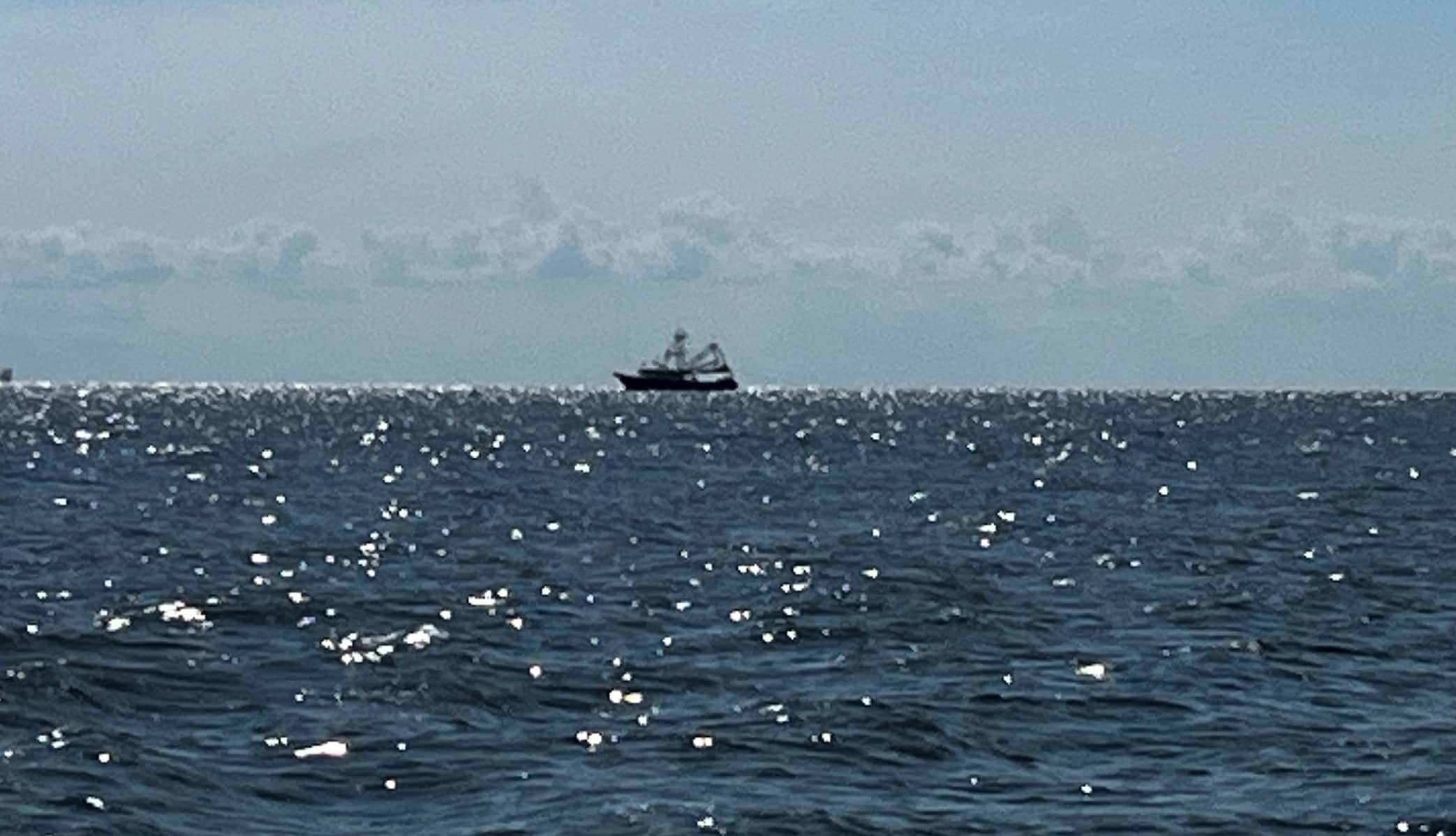LWFC Passes NOI to Amend Buffer Zone for Pogey Boats on the Louisiana Coast
Keith Lusher 10.12.23


On Oct 5 the Louisiana Wildlife and Fisheries Commission passed a Notice of Intent (NOI) to amend rules to the menhaden fishery regarding the buffer zone and spill reporting.
This comes after hundreds of dead redfish were discovered washed up on the shore near Holly Beach in Cameron Parish. It was confirmed that there were three separate incidents that occurred where 850,000 pogies were spilled including the bycatch inside the nets.
The menhaden AKA pogey boats harvest over 611 million pounds of menhaden per year resulting in 66.4 million dollars earned in Louisiana waters alone. But it’s not the harvesting of menhaden that’s the problem, it’s the bycatch that is killed during the harvesting process.

David Cresson, with the Coastal Conservation Association of Louisiana, appeared on the William Wallis for America show recently and shared with Wallis the process that these companies go through in order to harvest menhaden. “The way that they promulgate this fishery is they send airplanes out across the Gulf and those airplanes can spot these schools of fish. These places then send a message down to the big boats which are a fleet of 25 to 30 in Louisiana. The boats then travel to the school of Menhaden where they deploy two smaller boats that encircle the school using an enormous 1,500-foot-long net. Then they tighten the net close like a purse which is why they call it a ‘purse seine’. The net is tightened to a diameter of about 20 feet. Then they pull the boat up to the encircled net and stick a giant industrial vacuum hose into the middle and they suck out everything that’s inside of it,” Cresson said. The process was likened by Wallace as “clearcutting a rainforest” because everything in the net is sucked up including redfish, speckled trout, and numerous other species of inshore fish. “It’s an enormous take for this industry. They’re taking a billion pounds of menhaden out of the water but while they’re doing this they’re also taking tens of millions of pounds of by-catch that I could list for a half-hour if you wanted me to. Redfish spawn on the very beaches where these boats are fishing. It’s got to stop,” Cresson said.

At a time when the redfish population in Lousiana waters is lower, recreational anglers are bearing the brunt of the blame for “overfishing” the species. And while the lower bag limits and increased size limits haven’t been enacted yet, the proposed limits are still moving forward. “Right now we’re having trouble with redfish in Louisiana so much so that recreational anglers may suffer lower limits by our fisheries managers. So our limits are about to be lowered yet this industry is clearly killing thousands of these spawning fish with absolute impunity. We need our politicians to step up now,” Cresson said. So far some representatives have stepped up. Cresson mentioned Rep. Joe Orgeron, Sen. Jeremy Stein, and Rep. Troy Ramero as being instrumental in the fight against these pogey boats. “We’ve got lots of champions on this issue but like everything in Louisiana, political gamesmanship and bought protection ends up stepping in and stopping good progress,” Cresson said.
A bill was voted down in 2020 that would have put in place a one-mile menhaden fishing “exclusion zone” along the entire Louisiana coastline. Texas and Mississippi have the same restrictions in place so the bill would have created a buffer zone that is consistent throughout the Gulf Coast except for Florida which has banned these pogey boats altogether.
The NOI that was passed will move in front of the Commission for them to gauge the economic impacts before the rule becomes final. The NOI contains the following:
Buffer Zone
This portion of the NOI establishes a coastal buffer zone for the commercial harvest of menhaden 1-mile off the entire Louisiana coastline and three miles from the area between Holly Beach and Rutherford Beach in western Louisiana. This action will extend the existing ¼-mile buffer and the existing 3-mile buffer at Grand Isle, La. will remain in place.
Reporting
The section of the NOI establishes a 48-hour period for retrieving any menhaden or bycatch that is unintentionally or intentionally released into the environment and provides penalties and restitution associated with failure to comply. Additionally, the NOI specifies that reporting must also be made by phone call (in addition to the existing email requirement) within 2 hours of any release to the Enforcement Division. The proposed rule modification details specific reporting elements that must be included in the notification to the Enforcement Division.
The data that will be required to be reported after a fish release will include:
- Date and time of the release
- Species of fish released
- Disposition of the fish released
- Name of the vessel that released the fish
- Estimation of the number of fish released
- Photo / Video evidence of the release
- Coordinates of the release
- Causative factors of the release
The entire Notice of Intent that the Department of Wildlife and Fisheries Commission submitted can be found here

